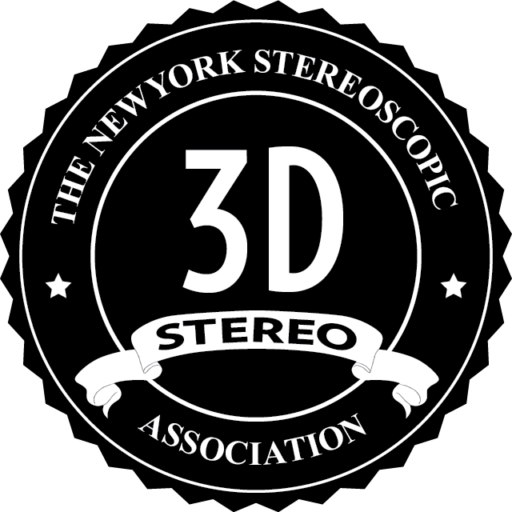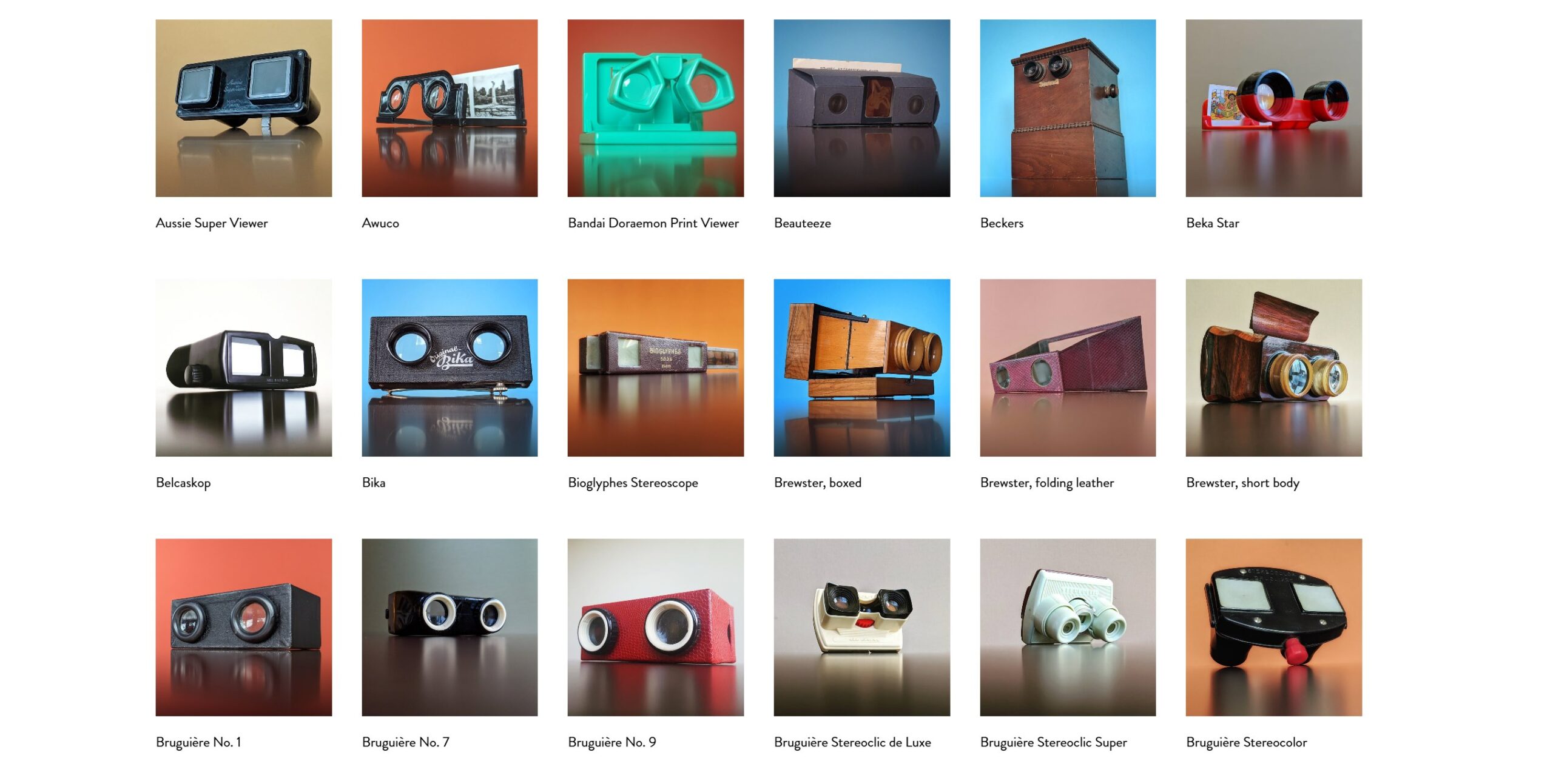This week’s featured guest is Keita Wangari
On February 15, 2025, the New York Stereoscopic Association (NYSA) hosted an engaging episode of NYSA Presents!, featuring a nostalgic exploration of Maidenform’s iconic advertising campaign and an in-depth presentation by guest Keita Wangari on vintage stereo viewers. The show, hosted by Johnny, included a segment on Maidenform’s “I Dreamed” magazine ads from the mid-20th century, accompanied by Ricky Nelson’s 1979 cover of Bobby Darin’s Dream Lover. The highlight was Keto Wangari’s passionate discussion about her extensive collection of stereoscopic viewers, showcased through her website, Vntageviewers.com, offering a fascinating look at the design and history of 3D viewing technology.
The episode kicked off with a nod to New Jersey’s Maidenform Brands, a company founded in 1922 in Bayonne. Johnny introduced a segment focusing on Maidenform’s legendary “I Dreamed” advertising campaign, which ran for over a decade starting in the 1940s. This magazine campaign featured vibrant, imaginative ads with the tagline “I Dreamed I Was [X] in My Maidenform Bra,” showcasing women in whimsical scenarios. The segment was paired with Ricky Nelson’s 1979 Memphis-recorded cover of Dream Lover, originally written by Bobby Darin, adding a nostalgic soundtrack to the colorful visuals. The discussion highlighted the campaign’s significance in the golden era of graphic design and magazine layouts, evoking a sense of mid-century advertising artistry.
The spotlight then turned to Keto Wangari, a passionate collector and researcher who founded VntageViewers.com, a comprehensive online resource for vintage stereoscopic viewers. Johnny praised the site as a “beautifully disrupted” platform that celebrates the art and design of 3D viewers rather than just their functionality. Wangari, who joined via Zoom, shared her journey into collecting, which began in 2017 after discovering a 1933 World’s Fair Tru-Vue viewer at a thrift shop. With no prior knowledge of stereoscopes beyond childhood memories of a View-Master, she dove into research, inspired by Tom Martin’s website, and amassed a collection of hundreds of viewers over the years.
Wangari’s presentation was a visual feast, featuring slides of her diverse collection, which spans over 150 years of stereoscope design. She emphasized the evolution of viewer materials—wood, metal, Bakelite, plastic, and even cardboard—and their functionality, usability, and affordability. Highlights included:
Tru-Vue Film Strip Viewers: Her largest sub-collection, inspired by her first find, includes rare models she discovered through persistent research.
Lithograph Tin Stereoscopes: From around 1900, these NPG-produced viewers were used for advertising, with Wangari owning 48, including the Imperial brand and company-branded versions.
Stereophoto Pendo Plast Viewers: A German sub-collection of 34 viewers from the 1930s and 1950s, featuring single rolls of film depicting factories, with prized Mercedes-Benz and Porsche examples.
Enduper-Style Viewers: Metal viewers from the Enduper company, founded by Alfred Croth and Carl Nighthold, often branded for advertising, including a Spirella version showcasing lingerie in 3D.
Cardboard Advertising Viewers: Disposable yet collectible, these included a rare sampler from a Fort Pierce, Florida, company, used to pitch advertising to businesses.
Wangari also showcased rare finds, such as a tea canister repurposed as a stereoscope, a Mickey Mouse viewer from 1950s England, and a non-coin-operated Sculptoscope, previously only rumored to exist. Her Stereo Max, an Italian horizontal viewer, and a Hebrew-inscribed viewer from Israel further demonstrated the global diversity of her collection.
Wangari’s collection extends beyond viewers to include stereo views—3D photographs that offer glimpses into history. She shared two notable sets:
1920s Children’s Portraits: A set of 16 Enduper-compatible views depicting posed children, possibly from a school or theatrical event, with no identifying information. Wangari estimated they were from the 1920s based on clothing, hairstyles, and the Enduper format.
1931 Travel Photos: A box of 145 views, likely personal photographs by Carl Nighthold, co-founder of Enduper and Siai. Captioned and dated from 1931, these images document travels across Germany, with references to “Carl” and “Mr. Croth,” suggesting a personal connection to Nighthold himself.
Wangari’s favorite subject in stereo views is industry—factories and workers—offering insights into historical workplaces. She also noted the scarcity of Black individuals in mid-century stereo views, prompting her to collect such images to document underrepresented perspectives. Her interest in history extends to researching potential Black photographers from the late 1800s, a topic she plans to explore further
In a lively Q&A, Wangari revealed that her website was born during the pandemic, when she decided to share her collection online after years of collecting in obscurity. With no local collector friends, she found community through online forums and connections with experts like David Starkman, Susan Pinsky, and Gary Denine. Her background as a researcher—previously at Google and now founding a startup—equipped her to meticulously document her findings. She admitted to having no artistic talent but sees collecting as a creative outlet, blending her engineering roots (from an early career in aviation) with her love for design and history.
Wangari’s acquisition process relies heavily on eBay, with most purchases made sight-unseen, adding an element of excitement to each delivery. While she owns 3D cameras, including a Lomo, she has no plans to shoot 3D herself, preferring to focus on collecting and sharing. Her recent initiative, the Stereo View Spotlight on her website, aims to highlight her coolest stereo views, with this episode featuring her second edition.
The episode wrapped up with gratitude to Wangari for her insightful presentation and to the NYSA crew. Johnny encouraged viewers to explore VintageViews.org and join the afterparty to continue the conversation with Wangari. The show closed with a playful nod to New York, set to the tune of New York, New York, celebrating the city’s vibrant energy.
This episode of NYSA Presents! was a delightful blend of nostalgia, history, and passion, offering viewers a unique perspective on the artistry and cultural significance of stereoscopic technology. Wangari’s enthusiasm and expertise made it a memorable exploration, sure to inspire collectors and history buffs alike.
Maidenform Brands: www.maidenform.com
VintageViews.org: www.vintageviews.org
Tru-Vue: No official website; historical product referenced.
View-Master: No official website; historical product referenced.
Lomo (Lomography): www.lomography.com

